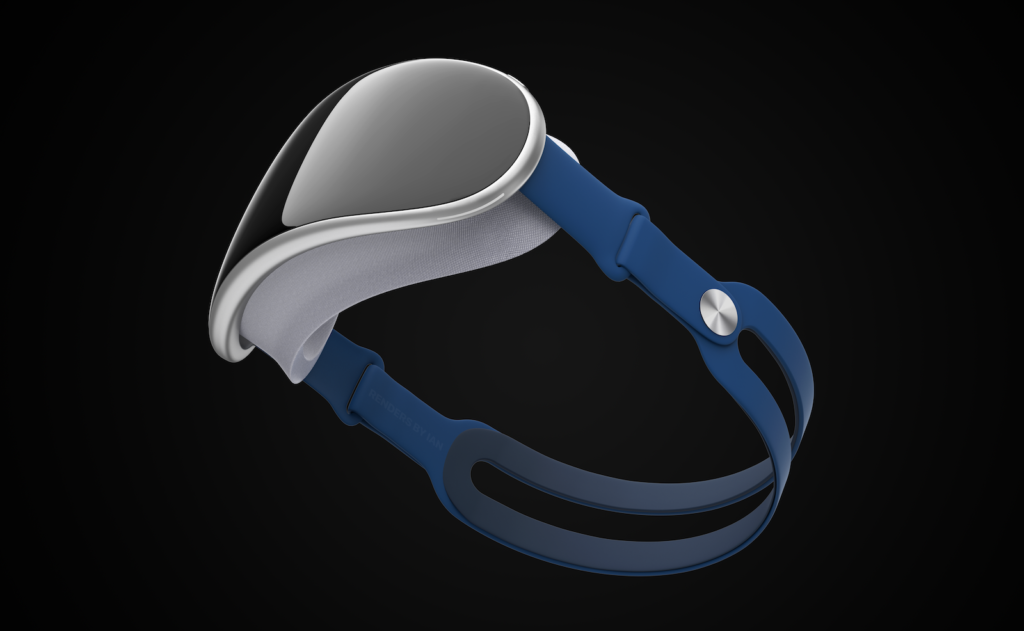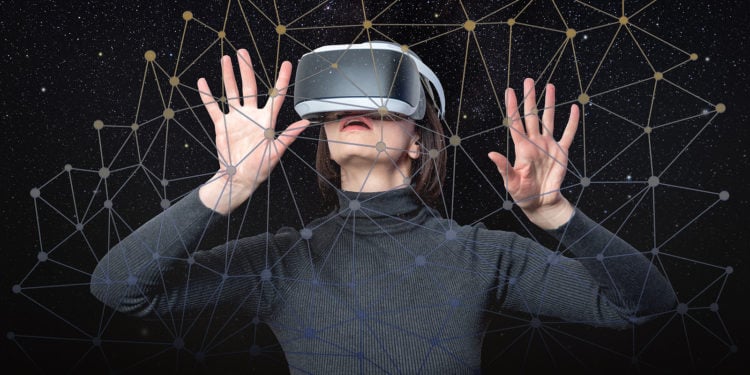The mixed reality headset that Apple has been working on for years is set to launch in 2023. Bloomberg today released some information about the headset's interface, the applications it will include, and how it works.
Apple's mixed reality headset will have an "iOS-like" interface that includes "many features" of the iPhone and iPad, with the headset also able to act as an external screen for a connected Mac. Users will be able to see their Mac's display in VR and control the Mac with a physical keyboard and trackpad/mouse. The headset will "feel familiar" to Apple users, as the interface is nearly identical to that of an iPhone or iPad. There will be a home screen with app icons that can be rearranged, as well as customizable widgets.
Apple's mixed reality headset with eye and hand tracking
A "key selling point" for the headset will be eye and hand tracking, as Apple uses external cameras that can analyze the user's hands and eyes. Loud According to Bloomberg, the user can control the headset by looking at an item on the screen to select it and then using gestures to activate the item on the screen. Unlike other headset options, Apple is not relying on a physical controller. The headset, which will likely be called "Reality Pro," can switch between augmented and virtual reality. Augmented reality overlays virtual objects on top of the real world, while virtual reality presents a completely virtual environment that blocks out the wearer's surroundings. The augmented reality features work via a pass-through mode that uses the headset's external cameras. Switching between AR and VR is done via a Digital Crown-like control knob.
Facetime on a new level
One focus will be on video conferencing, for which Apple will offer FaceTime-based video chats and meeting rooms. A user's real face and full body will be rendered into virtual reality for interactive meetings, while realistic avatars will be available for one-on-one conversations. Multi-party FaceTime will use less detailed icons like Memoji. Apple is working with media partners like Disney and Dolby on VR content, updating Apple TV+ shows and movies for use with the headset. Apple's goal is to give viewers the feeling of looking at a giant screen in an environment like the desert or outer space.
Mixed Reality Headset: Glasses wearers are also taken into account
Apps include Safari, Photos, Mail, Messages, Apple TV+, Apple Music, Podcasts, and Calendar. The headset will have its own app store for third-party content. Siri can be used for text input, as can an iPhone, iPad, or Mac keyboard. Apple is working on an Air Typing feature, but it is not expected to be ready for market yet. For people who wear glasses, Apple will offer special lenses that can be inserted into the case. Apple expects users to wear the AirPods to get an audio experience that is in no way inferior to the visual experience of the headset, although it will have built-in speakers.
External battery should offer several advantages
As previously rumored, the headset will feature an external battery to prevent the high-quality Mac chips used for the device from causing overheating on users' faces. The battery is about the size of two iPhone 14 Pro Max stacked on top of each other and will power the headset for about two hours. With an external battery, users can swap out one battery and charge another to keep the device going for longer.

Other AR/VR features of the headset are rumored to include 4K micro-OLED displays, more than a dozen cameras, iris tracking, facial expression recognition, and more. The headset is expected to be unveiled sometime in 2023, possibly as early as spring, and will cost around $3,000. To generate interest in the headset, there will be a dedicated area in Apple Stores after the launch where it can be demonstrated and tested. (Photo by Ivochkina / Bigstockphoto)





